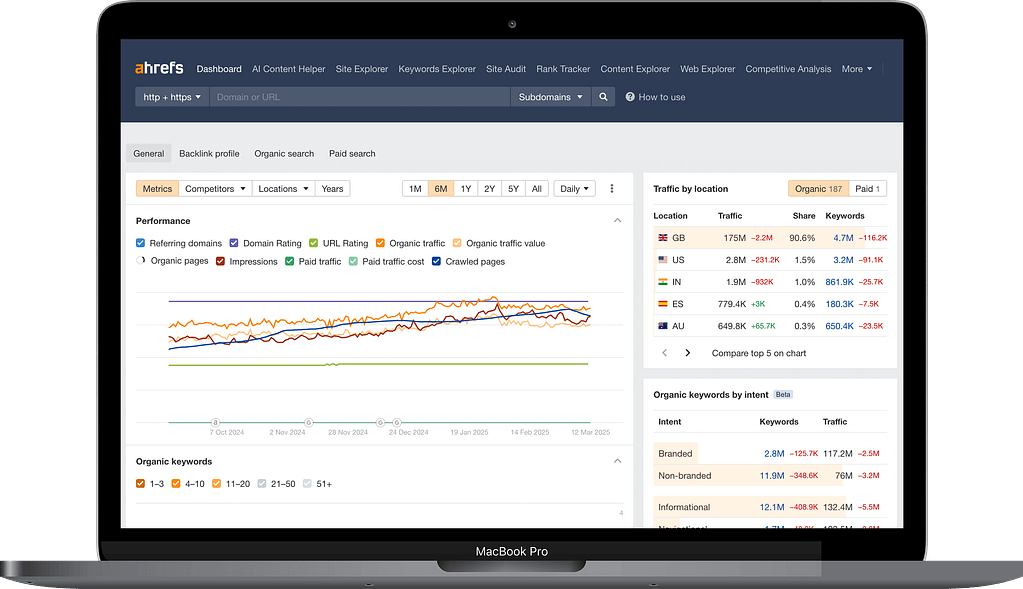Posted 12.03.2025
By Becky Morris
Every time you search for something, you’re looking for an answer.
Whether that’s a way to clean a red wine stain off your brand new sofa or you’re looking for your next pair of running trainers for the marathon you signed up for – you want to find an answer to your question or a solution to your problem.
Search intent refers to exactly this, the reason behind a search or query.
As a searcher you are a search engine’s customer, and, like any business, search engines want their customers to find what they are looking for as quickly and easily as possible – this is where search intent comes in.
Search intent is an important consideration when creating the content for your website. Here, we look at what search intent is and how to optimise your content to match the motivations behind potential customers’ searches.
Search intent is the reason or motivation behind a search query online. So, in simple terms, search intent is why people search for what they search for online. You may also hear it being referred to as user intent, audience intent or query intent.
Search intent can be divided into four main categories:
In the SEO world, they are referred to as informational, commercial, transactional and commercial intent.
We have broken down the four types of search intent below:
| Type of Intent | Description | Examples |
| Informational | The searcher is looking for information to answer their question. | “What is SEO?” |
| Commercial | The searcher is comparing / looking for products and services. | “SEO Services Derby” |
| Navigational | The searcher is looking for a specific website or webpage. | “Facebook” / ”The Digital Maze” |
| Transactional | The searcher is looking to complete an action, such as making a purchase or signing up for a service. | “SEO services quote” / “live derby marketing events” |
Understanding search intent is crucial for improving your SEO performance. It allows you to understand and align with your customers’ needs and create content that is relevant, clear, and helpful, improving the overall experience for users visiting your site.
Content that aligns with user search intent is more likely to be ranked higher by search engines. Once in the SERPs, content that matches the search intent increases the chances that users will click on your result. Then when they are on your website, you can guide users effectively through the purchase or conversion process, improving sales or goal completions.
In this ever-evolving, competitive world, traffic and visibility are key to helping your online business thrive by attracting the right customers and generating more conversions or revenue. Don’t waste your time writing great content that your customers don’t care about or engage with.

So, how do you figure outsearch intent? Below, we have compiled our top tips and tricks for determining search intent and incorporating it into your SEO strategies.
Choosing the right keywords is crucial to implementing the right search intent in your SEO strategy. Get into the minds of your customers and target audience. What are the kinds of things they would search for around your business, services and/or products? Once you have a list of some keywords you think your customers will be using, you can delve a bit deeper.
We recommend looking at keywords from each stage of the sales funnel. If you sell engagement rings then potential customers may fit into all of the search intentions. For example:
| Intent | Example |
| Informational intent | During the research stage, they might be searching for ‘What are the best engagement ring styles?’ or ‘How to find my partner’s engagement ring size?’. |
| Commercial intent | Customers might also be more specific with their search by looking for more specific types of engagement rings, for example, ‘white gold engagement rings’ or ‘pear diamond engagement rings’. |
| Navigational intent | If someone has seen your store out and about, is a returning customer or has found your website through informational content and wants to come back, they may just search for your brand name. |
| Transactional intent | If your potential customers are further down the funnel and ready to purchase, they may search using a query such as ‘buy white gold pear diamond engagement ring’. |
The best SEO strategies include keyword research that takes into account all relevant types of search intent.
Search for the keywords you think your customers are using. The current search results can help you understand if you’re using the right keywords. If you see competitors appearing and businesses like yours, then you’re on the right track.
Once you’ve found the type of keywords your customers are looking at, see what type of results are appearing for them. What are your competitors doing? What kind of content are they pushing? What are the common themes of the content or pages? What’s the search intent behind each listing?
SERP features can be a great tool to help determine what kind of search intent is behind a keyword. For example, if, when you search for a keyword the google shopping result bar appears the search is likely to be transactional or, if a featured snippet or AI overview comes up, the query is likely to be informational.
Here is our step-by-step process for reviewing the SERPs for search intent:

If you’re unsure of the search intent behind keywords, handy tools, such as Ahrefs and SEMRush can determine this for you. Input your keywords into your chosen tool and it will label each keyword with the suspected search intent.
Sometimes, search intent may not be easy to identify, or there may be multiple intentions behind a search. Getting the right intent is crucial if you want your content to rank.
For example, someone may search for ‘womens running trainers’ where they are looking for information about women’s running trainers (informational intent) but alternatively, they may want to compare different brands and types (commercial intent).
In cases of mixed intent, you can choose which search intent will benefit you best. If you have an ecommerce website, then choosing the commercial intent may align best with your business goals.
So, once we’ve figured out our search intent, how do we actually optimise content to meet it?
Look at the top-ranking pages for the search query; this highlights the type of content that search engines consider the most valuable and relevant to customers, giving you a great indication on the type of content you should produce.
Using the three Cs of search intent helps you figure out how best to optimise your content correctly. The three Cs of search intent are:

As with any content, when optimising for search intent it is also important to not forget SEO best practices when optimising content. We’ve listed some of them below:
Google’s helpful content update, which was first introduced in 2022, means that it now prioritises content that is actually useful over content that has just been created to rank.
As great as content is for SEO, sometimes it’s not about writing lots of quality content. Sometimes when people search, they may not want lots of “content”; instead, they may simply want to buy something, get a quote or sign up for something.
This is why search intent is so important. Instead of writing a blog post, all you may need is an optimised product page or a landing page ready for people to sign up or get a quote.
We’ve covered quite a bit in this blog, so we’ve summarised everything we’ve covered below.
Need help with your web design or digital marketing?
Talk to an expert today or call us on 01332 493766
Part of The Digital Maze Group